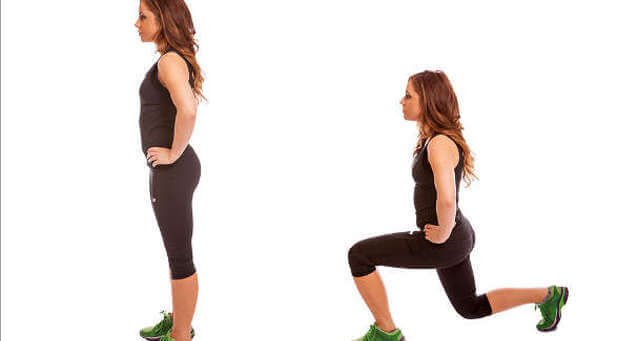If you follow me on social media, you may have seen a few of the photos I took over Thanksgiving in stunning Telluride, Colorado. From the warm fireplace of our cozy cabin and the quaint old mining town, to horseback riding in the midst of the San Miguel mountains and snowmobiling at over 10,000 feet, my husband and I were blessed to bask in a winter wonderland and take in the beauty of God’s creation.
It was a wonderful escape into an environment totally different than San Antonio. The only thing that wasn’t out of the ordinary was my workouts.
For all the gladness and good cheer the holiday season holds, it can also bring a lot of heartache to our health and fitness if we’re not careful. Between Christmas shopping, baking, eating, traveling, and ugly Christmas sweater-wearing, eating well and working out quickly slip down our list of priorities.
A few weeks ago on my blog, I gave a few tips on how to avoid holiday weight gain. Today, I thought it appropriate to address the exercise side of what I’ll call the “Healthy Holidays Equation.”
While in Telluride, I could have come up with several excuses for why I should forgo exercise. For one, we were up pretty high up—9,500 feet to be exact—and I would probably become short of breath if I exerted myself too much. In addition, the cabin we stayed in didn’t have a single piece of gym equipment, and the nearest fitness facility was three gondola rides and a snowy, ice-filled hike away. And finally, the only available workout space was on the top floor; far be it for me to wake up the whole house early in the morning with any jumping, stationary jogging, what have you.
I am happy to report that I did not succumb to the inevitable whirring of the well oiled, excuse-making machine. Instead, I resolved to go a little easier on myself so as not to become dizzy or breathless. Also, I decided that for the week, I would perform bodyweight exercises only, giving my body a much-needed break from my beloved weights—and hey, no snow boots or icy trek required! And as for my concern for my fellow vacationers’ REM sleep, I just eliminated any particularly noisy movements from my planned routines.
I read a Q&A column in Fitness Rx recently in which readers wrote in questions to celebrity trainer Gunnar Peterson. His number one piece of advice for maintaining one’s physique during the holidays was to “NEVER miss a workout.” He said that working out “is the only thing [we] can truly control” and so we should stick to our training schedule “with fervor.” I wholeheartedly agree. We may not be able to control where we eat and what we eat, and heaven knows we’ll likely overindulge a time or two, but we can absolutely control whether we exercise or not, no matter where we are.
The following is one of the lower body routines I did while in Colorado. Not including a five-minute warmup, it took only 20 minutes to complete. If you’re in the market for more quick, equipment-free routines, check out my Instagram feed @dianaandersontyler where you can find photos of all four of my recent excuse-proof workouts!
Before we begin, I should tell you what “Tabata” means since you’ll be seeing that word over and over in the following routine!
Tabata training was discovered by Japanese scientist Dr. Izumi Tabata and a team of researchers from the National Institute of Fitness and Sports in Tokyo. Dr. Tabata and his team conducted research on two groups of athletes. The first group trained at a moderate intensity level, and the second group trained at a high-intensity level. The moderate intensity group worked out five days a week for a total of six weeks; each workout lasted one hour. The high-intensity group exercised four days a week for six weeks; each workout lasted four minutes and 20 seconds (with 10 seconds of rest in between each set).
The results: Group 1 had increased their aerobic system (cardiovascular), but showed little or no results for their anaerobic system (muscle). Group 2 showed much more increase in their aerobic system than Group 1, and increased their anaerobic system by 28 percent. In conclusion, high-intensity interval training has more impact on both the aerobic and anaerobic systems.
A Tabata workout lasts only four minutes, but provides one heckuva bang for your buck! The structure of the program is as follows:
- Workout hard for 20 seconds
- Rest for 10 seconds
- Complete eight rounds
If you have a smartphone, there are several apps you can download that will provide a Tabata timer so you don’t have to keep track of when to start and stop yourself.
If you’re brand new to high-intensity training, I recommend performing only half (4 rounds) of the following Tabata workouts. And please please please don’t skip the warmup!
WORKOUT
Warmup
- 10 lunges each leg with arms overhead, fingers interlaced. Hold each lunge for 3 to 5 seconds.
- 10 slow body weight squats. Hold at the bottom for 5 seconds, driving the knees out with the elbows to open up the hips.
- 10 reverse lunges with arms overhead, fingers interlaced. Hold each lunge for 3 to 5 seconds.
- 10 body weight squats at a normal pace. Be sure to squat to at least parallel. If you can, lower until your hip crease is below your knees.
- 30 jumping jacks
- 30 stationary butt kicks
- 30 stationary high knees
- 8 Rounds Tabata Air Squats (Rest as needed before beginning next section).
- 8 Rounds Tabata Reverse Lunges (Rest as needed before beginning next section).
- 8 Rounds Tabata Split Squats, right leg (Rest as needed before beginning next section).
- 8 Rounds Tabata Split Squats, left leg (Rest needed before beginning next section).
- 8 Rounds Tabata Forward Lunges (Be sure to stretch for 5 to 10 minutes afterwards!)
WORKOUT
Instructions (in order of appearance)
Air Squats
a) Stand with your feet spread apart at a distance slightly wider than the shoulders. Position your feet so that your toes angle out. This angle varies from person to person, but should be about 30 degrees. Keep your weight on the heels to prevent yourself from rolling up onto the balls of your feet.
b) Keep your chest up, shoulders back, head up. This helps promote a nice, safe, intact lumbar curve.
c) Place arms straight out in front of your chest. The arms should be in a comfortable position as they act as counter balance to the motion of the exercise.
d) Bend your knees as you lower yourself down. Pretend there is a chair behind you that you’re reaching back to sit on. Your knees should track over your feet and never jut out over them. In other words, your knees should be pointing in the same direction as your toes. If you find your knees starting to cave in, focus on pushing them out. A good way to achieve this is by imagining you are tearing the floor apart with your feet.
e) The push back up should be generated from your hamstrings and glutes. Your chest and head should remain pointing straight forward. As you rise, your arms will probably lower back to your sides naturally. Make sure your knees keep tracking with your toes and do not begin to buckle inwards. Also be sure and keep your lumbar curve intact (curved). Generally speaking, if you have your chest and head up, your lumbar curve will be in the correct position.
Reverse Lunges
a) Stand with feet shoulder-width apart, torso upright with arms hanging straight at your sides.
b) Take a slow, controlled lunge backward with one foot.
c) Lower your hips so that your front leg becomes parallel to the floor. At this point your right knee should be positioned directly over your ankle and your front foot should be pointing straight ahead. Your left knee should be bent at a 90-degree angle and pointing toward the floor. Your left heel should be lifted.
d) Push through both feet to straighten your legs. Bring your left foot back to meet your right in the starting position. Repeat on the other side, and continue alternating for the given number of repetitions.
Split Squats
a) Stand with your hands on your hips. Position feet far apart; right foot forward and left foot behind.
b) Squat down by flexing the knee and hip of your right (front) leg. Allow the heel of left (rear) foot to rise up while knee of left leg bends slightly until it almost makes contact with the floor.
c) Return to original standing position by extending the hip and knee of your right leg. Follow these instructions for the left leg as well.
Forward Lunges
a) Stand with feet shoulder-width apart, torso upright with arms hanging straight at your sides.
b) Take a slow, controlled lunge forward with one foot. As you lunge, lower your body and allow the lunging knee to bend until your thigh is parallel to the ground.
c) Push explosively off the lunging foot to return to the starting position.
If you’re interested in more do-anywhere workouts that require very little—or zero—equipment, check out my book Perfect Fit!
Diana Anderson-Tyler is the author of Creation House’s Fit for Faith: A Christian Woman’s Guide to Total Fitness, Perfect Fit: Weekly Wisdom and Workouts for Women of Faith and Fitness, and her latest book, Immeasurable: Diving into the Depths of God’s Love. Her popular website can be found at dianaandersontyler.com and she is the owner and a coach at CrossFit 925.
For the original article, visit dianaandersontyler.com.


